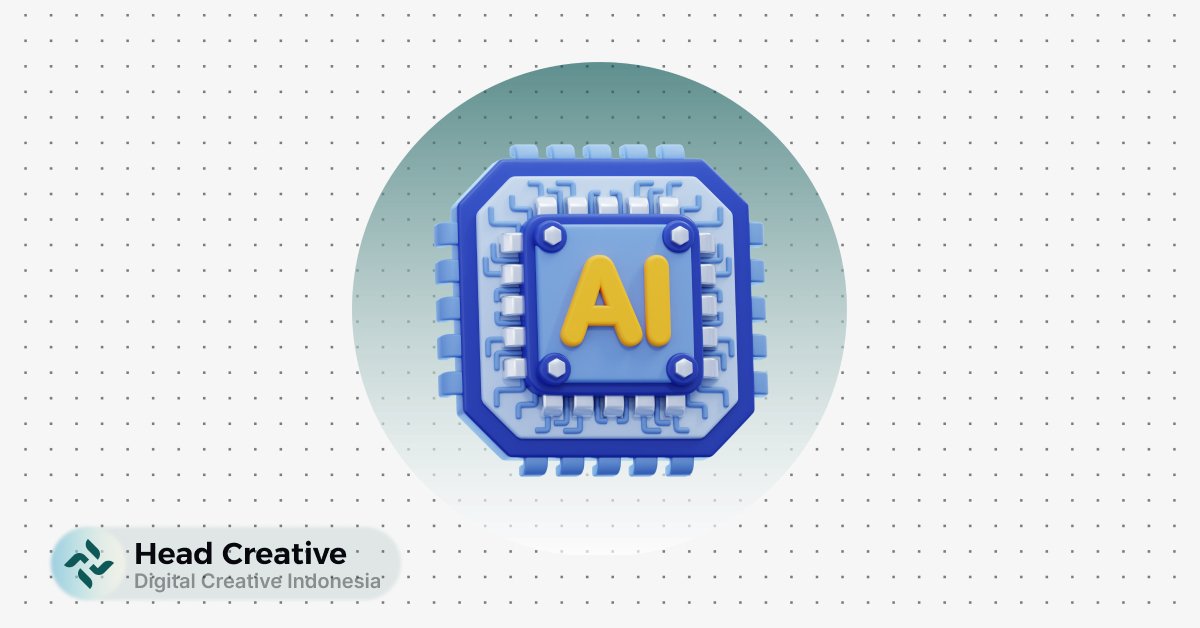A Brief Definition of Artificial Intelligence (AI)
Artificial Intelligence (AI), known in Indonesian as kecerdasan buatan, is a branch of computer science aimed at creating systems or machines capable of mimicking human intelligence. In other words, AI is designed to perform tasks that typically require human intelligence, such as voice recognition, language comprehension, decision-making, and even the ability to learn from experience.
AI is not just about advanced robots often depicted in science fiction films. In fact, AI works behind the scenes in many everyday applications, from movie recommendations on streaming platforms to navigation systems on your phone.
Why Is It Important to Understand How AI Works?
Understanding how AI works is becoming increasingly important in today’s digital era. Here are a few reasons why knowledge about how AI functions is highly relevant:
- The Influence of AI in Daily Life: AI is everywhere—from smartphones and vehicles to customer service. Knowing how AI works helps us understand how decisions are made by the systems we use every day.
- Enhancing Adaptability: In an ever-evolving job market, many industries are integrating AI to improve efficiency. By understanding how AI operates, we can more easily adapt to technological changes.
- Building Ethical Awareness: AI is not without risks. From algorithmic bias to data privacy issues, understanding AI helps us become more critical users, aware of its ethical implications.
Simple Examples of AI in Everyday Life
To better understand how AI works, let’s look at some real-life examples of how AI has become part of our daily routines:
- Google Maps: Ever wondered how Google Maps provides the fastest route? AI analyzes real-time traffic data, predicts road congestion, and recommends more efficient alternative routes.
- Siri and Virtual Assistants: Virtual assistants like Siri, Google Assistant, or Alexa use AI to recognize your voice commands, understand their context, and provide relevant responses. Here, AI works by processing natural language and learning from previous interactions.
- Movie Recommendations on Netflix: When Netflix recommends movies or TV shows that match your preferences, it’s not by chance. AI analyzes your viewing history, compares it with patterns from other users, and predicts what you might enjoy.
- Spam Filters in Email: AI is also used to detect and filter spam emails. These systems learn from millions of email examples to distinguish between legitimate messages and potentially harmful ones.
Through these examples, we can see how AI subtly helps make our lives easier. However, behind this convenience lies a complex process that enables AI to function effectively. To gain a deeper understanding, let’s explore more about how AI works in the next section.
Read Also: AI Technology in Website Development: Simple, Fast, and Efficient!
Challenges and Limitations of AI
While AI offers a wide range of remarkable benefits, this technology also comes with challenges and limitations that cannot be ignored. Understanding these limitations is crucial to using AI wisely and effectively.
Current Limitations of AI
1. Data Bias:
AI is only as good as the data it is trained on. If the data contains biases, the AI’s output will also be biased. For example, an AI-based recruitment system might favor candidates from certain groups if the training data is not diverse.
2. The Need for Large Data Sets:
AI’s functionality heavily relies on the availability of large amounts of data. Without sufficient data, AI cannot learn effectively. This becomes a challenge, especially in industries that do not have access to large-scale data.
3. Lack of Contextual Understanding:
Although AI can process data quickly, it often struggles to understand the context behind the information. For instance, an AI chatbot may provide irrelevant answers because it doesn’t grasp emotional nuances or specific user situations.
4. Dependence on Technological Infrastructure:
AI requires high computational power and complex infrastructure. This can be a barrier for small organizations with limited resources.
Risks and Ethical Concerns of AI
1. Data Privacy:
AI often requires access to users’ personal data, posing privacy risks if the data is not managed properly.
2. Automated Decision-Making:
In some cases, AI makes critical decisions without human intervention, such as in credit systems or medical diagnoses. Errors in these decisions can have significant impacts on individuals’ lives.
3. Use for Harmful Purposes:
AI can be used for malicious purposes, such as deepfake creation, cyberattacks, or information manipulation.
4. Social Inequality:
AI can widen social and economic gaps if not managed fairly. For example, automation may replace human jobs without strategies to address the social impact.
Understanding these challenges and risks helps us develop and use AI more wisely. Despite its advanced capabilities, AI has limitations that must be acknowledged to ensure it brings positive benefits to society.
Examples of AI in Everyday Life
AI is not just a futuristic concept confined to high-tech labs. In fact, AI has already become part of our daily routines. Here are some common AI applications, along with explanations of how AI works behind these applications:
Common AI Applications
1. Chatbots:
Chatbots are used on many websites and apps to provide automated customer service. They utilize Natural Language Processing (NLP) to understand user queries and deliver appropriate responses. Popular examples include virtual assistants like Siri, Google Assistant, and e-commerce chatbots.
2. Email Spam Filters:
Spam filters in emails use AI to detect and block suspicious messages. AI works by analyzing patterns in email text, sender addresses, and user behavior to identify potential spam.
3. Weather Prediction:
Weather forecasting applications use AI to analyze meteorological data from various sources. AI processes data on temperature, humidity, air pressure, and wind patterns to generate accurate forecasts.
4. Product Recommendations in E-commerce:
Online shopping platforms like Amazon and Tokopedia use AI to recommend products based on users’ search and purchase history. AI analyzes big data to understand individual preferences.
5. Facial Recognition:
Facial recognition is used for unlocking smartphones or identifying faces in photos. AI is trained to recognize unique facial patterns through deep learning algorithms.
A Brief Explanation of How AI Works Behind These Applications
- Data Analysis: All AI applications begin with collecting and analyzing large amounts of data.
- Modeling and Learning: AI is trained using this data to recognize patterns and make predictions.
- Model Deployment: Once trained, the AI model is deployed in applications to make automated decisions.
- Continuous Improvement: AI applications continuously learn from new data to improve their accuracy over time.
Conclusion
AI is no longer just a futuristic concept from science fiction movies. Today, AI has become an integral part of everyday life, from simple applications like email spam filters to advanced technologies like weather prediction and facial recognition. Understanding how AI works is essential not only for tech professionals but for anyone who wants to be more aware and critical of the technology they use daily.
Through various processes such as data collection, processing, algorithm selection, model training, and evaluation, AI can provide efficient solutions to challenges across different industries. While offering numerous benefits, AI also presents challenges and limitations, such as data bias risks, the need for large data sets, and ethical issues that must be considered.
By understanding the fundamentals of how AI works, we not only become smarter users but also better equipped to anticipate potential risks and leverage AI’s potential to improve our quality of life. The future of AI is bright, but how we manage and develop it will determine whether AI truly becomes a tool that delivers positive benefits to society at large.


